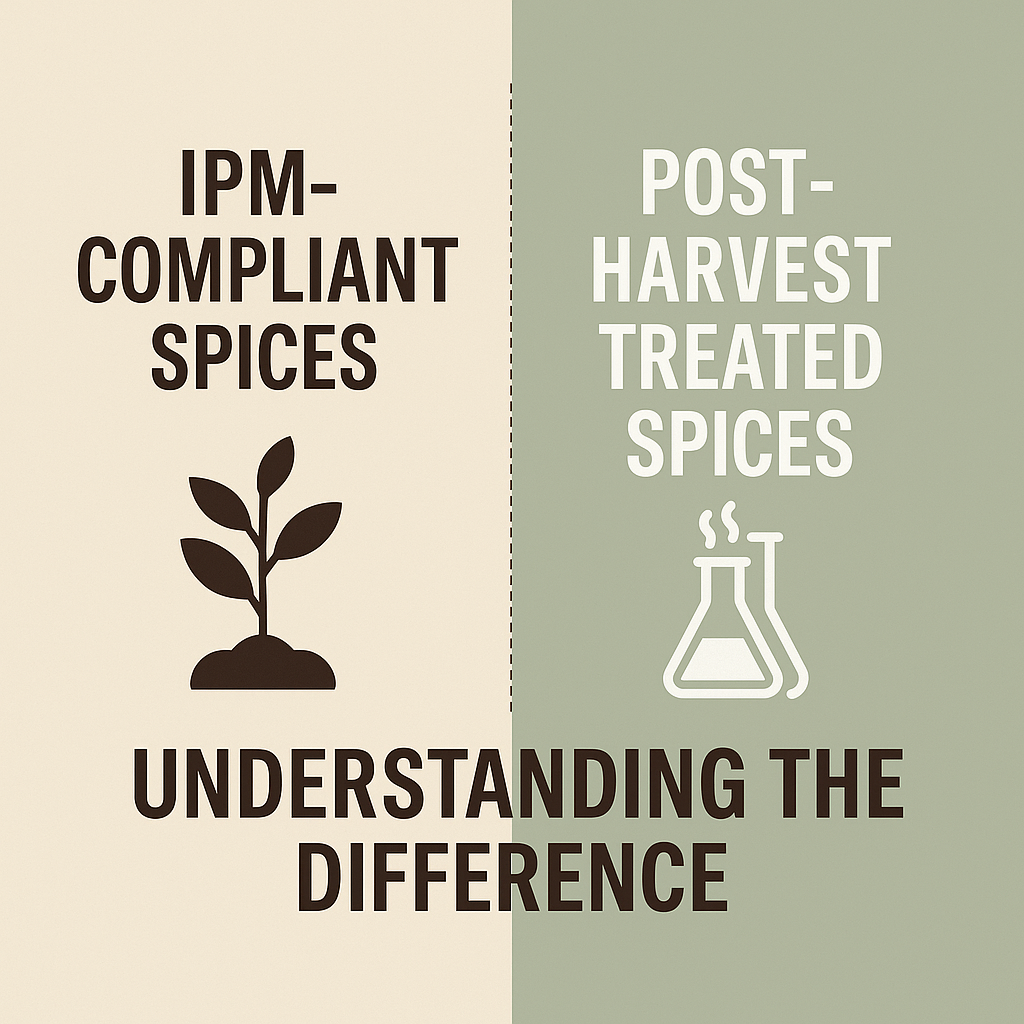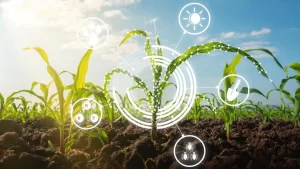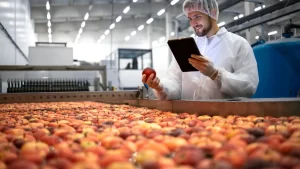When sourcing spices for export or retail, buyers often encounter two distinct quality terms — IPM-compliant spices and post-harvest treated spices. While both aim to ensure food safety and compliance, they are fundamentally different approaches with distinct implications for consumers, regulators, and sourcing decisions.
At Thar Biocrop, our goal is to simplify this nuanced distinction so you can make better-informed sourcing choices.
What Is IPM in Spices?
IPM stands for Integrated Pest Management — a sustainable farming approach that focuses on preventing pest problems at the source rather than fixing them post-harvest.
Key features of IPM-grown spices:
- Use of pest-resistant varieties
- Crop rotation and intercropping
- Natural and biological pest controls
- Limited use of synthetic chemicals
- Regular pest monitoring
The goal of IPM is to grow spices that meet MRL (Maximum Residue Limit) compliance without needing intensive post-harvest correction.
What Are Post-Harvest Treated Spices?
Post-harvest treated spices undergo various processing interventions after they are harvested, primarily to address microbial load, safety compliance, or physical appearance.
Common treatments include:
- ETO (Ethylene Oxide) fumigation
- Steam sterilization
- Gamma or infrared irradiation
- Washing with solvents or hot water
- Mechanical polishing and cleaning
While effective in addressing certain microbial risks, these methods do not remove pesticide residues, and may sometimes impact the spice’s flavor, aroma, or volatile oil profile.
Why These Two Approaches Are Not the Same
| Aspect | IPM-Compliant Spices | Post-Harvest Treated Spices |
|---|---|---|
| Approach | Preventive (farm-level) | Corrective (processing-level) |
| Residue Control | Built into farming practices | Not guaranteed by treatment |
| Microbial Safety | Naturally compliant if handled well | Achieved via sterilization |
| Sensory Profile | Retains natural flavor/aroma | May be altered by treatment |
| Sustainability | High (low input farming) | Lower (resource-intensive) |
| Traceability | From farm to export | Often limited to batch level |
These two approaches serve different needs and are not interchangeable.
Which Approach Is Better — or Does It Depend?
There is no one-size-fits-all answer.
| Buyer Type | Likely Preference |
| Organic or Clean Label Brands | IPM-compliant, untreated |
| Retailers Prioritizing Shelf Life | Post-harvest treated |
| EU Importers (MRL-sensitive) | IPM with test reports |
| US/GCC Buyers | Often accept treated options |
IPM spices may still be treated post-harvest for microbial reasons depending on destination country norms. The key is transparency and traceability.
Where Thar Biocrop Stands
At Thar Biocrop, we’re actively building supplier relationships with farm networks that prioritize IPM cultivation practices, while also understanding the role of post-harvest treatments in global compliance.
Our approach:
- Farming First: We prioritize MRL compliance at the farm level.
- Client-Driven Treatment: Post-harvest sterilization is done only if required.
- Total Transparency: We disclose the full lifecycle — from cultivation to final processing.
We believe food safety starts in the soil, not the sterilizer — but we also understand that responsible treatment has its place when used wisely and transparently.
🔗 Explore our MRL-compliant, IPM-grown ground spices
🔗 Contact us to explore clean-label turmeric, cumin, or chili sourcing options
Related Reading & References
- Codex Alimentarius: International Food Standards
- Why EU Buyers Are Moving Towards Untreated Spices (Spice Board India Report)
- Steam Sterilization vs ETO: A Comparative Review (McCormick Food Research)
Thar Biocrop is committed to clarity, compliance, and consciousness in spice sourcing. Let’s grow it right, treat it right, and keep it clean — for good.



